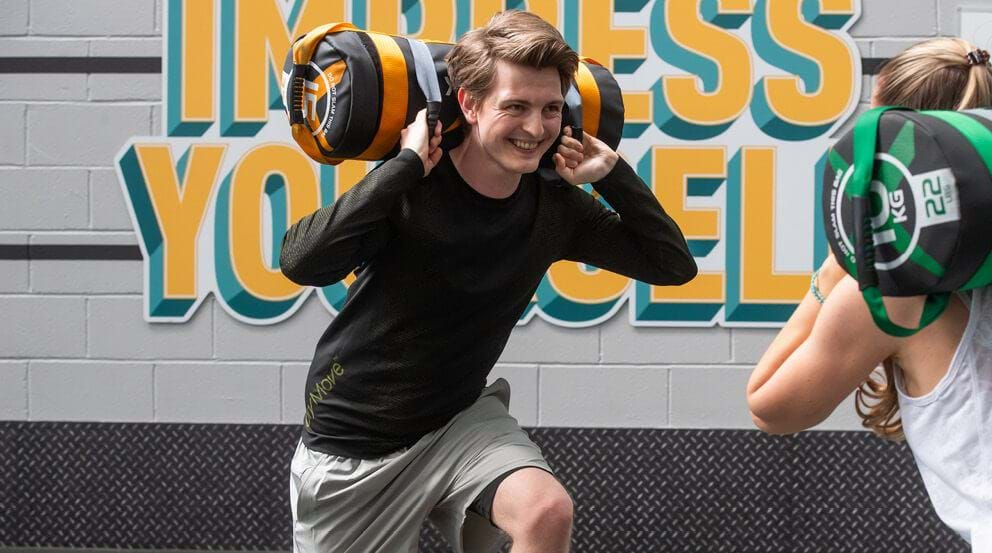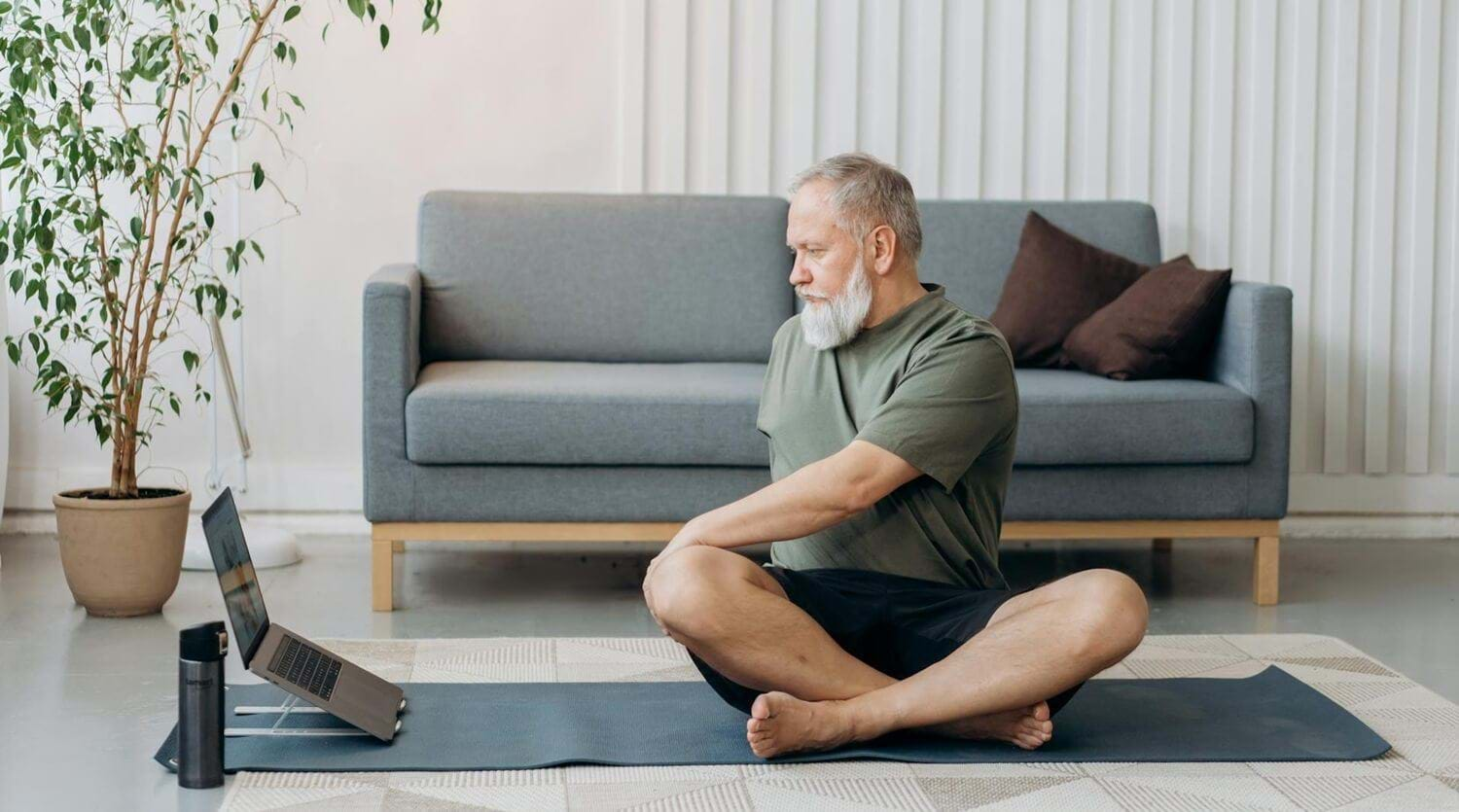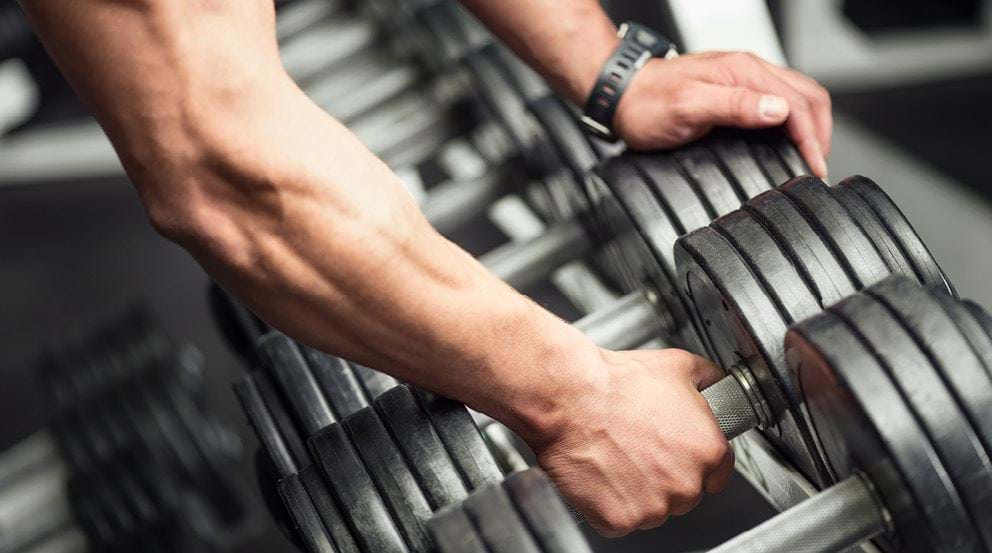Hyrox Sandbag Lunge Guide

What Is Sandbag Lunge | Benefits | Weight | Distance | Average Time | Exercises | Pacing | Common Mistakes | Training Plan | Workout Example | FAQs
Training for a Hyrox competition? We're sharing everything you need to in our Hyrox hub here. Today we're looking at how to master the sandbag lunges so you can stay strong to the end of the event.
Hyrox athlete, PT and PureGym Stockport Assistant Manager, Marcus Rayfield, is here with expert advice for training, pacing, and competition strategy.
What Is the Sandbag Lunge Event in Hyrox?
The sandbag lunge is the seventh, and penultimate, Hyrox station. By the time you pick up the sandbag, you will already have completed seven x 1,000m runs and six different functional stations, with just 100m sandbag lunges, a 1,000m run, and 100 wall balls to go.
Like all Hyrox stations, there are some Hyrox lunges rules:
The sandbag must be across your shoulders with both feet behind the line before taking your first step
Your back knee must touch the ground on each lunge, with both knees and hips fully extended when standing up.
You can lunge continuously or bring both feet together after each step.
At this point in the race, you'll be performing under accumulated fatigue, so having good sandbag lunge technique and pacing is essential to avoid burning out in the last part of the event.
What Are the Benefits Of Lunges?
Whether you're training for a Hyrox event or not, sandbag lunges are a great exercise to include in your workout routine. The sandbag lunge is an excellent compound exercise that works the quads, glutes, hamstrings, and core, with benefits including:
Unilateral strength: lunges are a unilateral exercise, meaning they work both sides individually. This helps to address strength and mobility imbalances between the two sides while building single leg power.
Joint stability: lunges work knee and hip stability through controlled movement patterns.
Balance and coordination: lunging involves shifting your weight between the front and back leg, and part of the exercise requires you to be on just one leg. Performing lunges helps to build balance, control, and coordination.
Upper body strength: holding the sandbag on your shoulders works the upper back and shoulders, as well as grip strength.
Training lunges can lead to better bilateral lifts such as squats and deadlifts as well as improving athletic performance.
What Weight Will You Use for the Sandbag Lunges?
The Hyrox lunge weight differs between categories and divisions:
Women and Women Doubles: 10kg sandbag
Men and Men Doubles: 10kg sandbag
Mixed doubles: 20kg sandbag
Women Pro: 20km sandbag
Men Pro: 30kg sandbag
What Lunging Distance Will You Need to Cover?
Every person competing in a Hyrox event is required to do 100m of walking lunges, regardless of which division and category they compete in.
It’s hard to say how many lunges in 100 meters – this is something you can figure out in training. Generally, athletes complete between 50-80 individual lunges to cover the full Hyrox lunges distance. If you take shorter steps you’ll do more reps but might give yourself better stability under load.
What Is the Average Time of the Lunges in Hyrox?
Completion times for the Hyrox walking lunges weight station vary by division and category but is around 5 minutes on average. Elite athletes typically finish in 3-5 minutes, while recreational athletes may take 6-8 minutes.
When doing the sandbag lunge station, focusing on maintaining a consistent pace and good technique is more important than rushing. This will prevent penalties and conserve more energy that final run and the wall balls!
4 Best Training Exercises to Improve Your Sandbag Lunge Performance
Practicing sandbag lunges is an important part of training for this station but it’s not the only way to prepare. Try adding these exercises into your training plan too,
Front rack walking lunges: develop shoulder stability and core strength in Hyrox sandbag position.
Bulgarian split squats: build unilateral leg strength and improve balance in single-leg stance.
Tempo lunges: use controlled timing (3-second descent, 1-second pause, 1-second ascent).
Barbell or dumbbell reverse lunges: strengthen posterior chain and improve stepping mechanics.
Pacing Yourself for the Sandbag Lunging Event in Hyrox Competitions
Pacing is essential to all Hyrox stations. For the sandbag lunge, there are a few techniques that can help:
Use short, controlled steps: this helps with stability so you use less energy on balance and are less likely to wobble or fall.
Keep breathing: holding your breath can cause an increase in your blood pleasure and lead to dizziness and fatigue. Focus on taking slow controlled breaths throughout the walk.
Keep hold of the bag: avoid dropping the bag if taking a break as this takes up valuable energy and time.
Common Mistakes and How to Avoid Them
There are a few easily preventable common mistakes people make when training for the sandbag lunge station, or during the Hyrox event itself.
Overstriding: people often overstride to cover more distance quickly, but long strides create instability and use up more energy to stay stable. Take smaller steps to maintain balance and control and increase the speed you move at instead.
Skipping mobility work: the Hyrox sandbag lunge requires you to place your back knee on the floor for each lunge which requires a good range of motion; being unable to do this is cause for a penalty. Add some mobility work into your warm ups and cool downs and practice your lunges with full range.
Only training bilateral movements: a common mistake is to use exercises like squats and deadlifts to build lower body strength but this neglects the single-leg strength that you'll need for the Hyrox sandbag lunges.
How Can You Incorporate Lunge Training Into Your Hyrox Preparation Plan?
As you train for your Hyrox event, aim to do different lunge variations 2-3 times in your training week to build strength and movement quality.
A good way to approach this is to mix strength and conditioning formats. For example, you can do three sets of heavy walking lunges in one training session, and pair lunges with runs in a superset in another. You should also practice lunges under fatigue to mimic race day conditions; this will build confidence as well as fitness.
How to Build a Hyrox Workout Plan That Includes Sandbag Lunges
A good Hyrox training plan will include strength, conditioning, and cardio to build overall fitness, and specific workouts to develop strength and endurance for each station. We have a free 12 week Hyrox training plan here you can follow, but if you'd prefer to create your own, here is a workout you can include to develop strength-endurance under fatigue for the final stages of a Hyrox event.
Complete 3 rounds:
- 800m run
- 20m sandbag walking lunge
- 20 wall balls
Rest 2 minutes rest between rounds
This combination of running, sandbag walking lunges, and wall balls will challenge you to pace sensible and maintain lunge technique round after round. The runs are slightly shorter than the real Hyrox distance, and the lunge and wall ball sections are significantly fewer reps - just enough to replicate the fatigue of the real thing.
FAQs About HYROX Sandbag Lunges
The number varies based on your step length, typically ranging from 50-80 individual lunges for most athletes. You will need to cover 100m distance.
Weights vary by division and gender – women, men, pro, recreational, singles, or doubles.
No. the best way to train Hyrox sandbag lunges is to do varied lunge training 2-3 times a week.
Ready to perfect your Hyrox sandbag lunge performance? Book a session with one of our Personal Trainers who will build you a training plan and help you get ready for the race. Find your nearest PureGym to get started.


